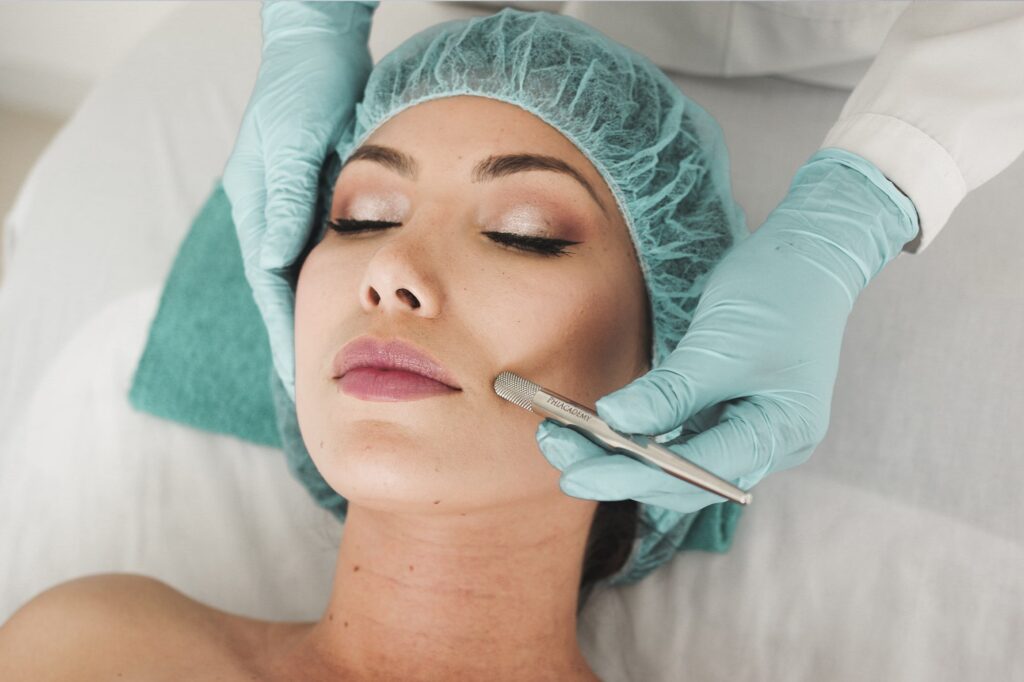Customer education is key to building great relationships with your clients. Most patients have heard about facial services in the past, but often they’re unfamiliar with what makes a facial a medical service vs. a spa treatment. In this blog, we’ll discuss ways to describe different types of facials to your patients.
Spa Facials and Medical Facials
The goal of facials performed in a spa is to provide a relaxed, pampering experience. Alternatively, medical facials achieve specific aesthetic goals through the use of medical-grade products and devices.
- Spa Facials: If your patients are looking for a traditional facial to treat common skin issues such as dry skin or clogged pores, a spa is often a good starting point. These facials offer a less expensive entry point because they can be performed by estheticians and utilize less expensive products. Patients who want to cleanse pores and exfoliate their skin will get great results from a spa facial. The national average cost for a spa facial is $80.
- Medical Facials: Medical facials focus on more serious skin concerns, and seek to achieve long-term, lasting results. These facials adopt a clinical approach to treatments. It’s important to communicate with patients that medical facials are different than spa facials they’ve received in the past to manage expectations. While treatment environments are designed to be relaxing, these facials have a more medical feel. Highlight the medical-grade products and devices that will be used to differentiate your service from the spa facials they’ve previously experienced. According to American Med Spa Association, 22% of medical spas in the Midwest offer medical facials.¹
If your patients are looking for treatments to address concerns such as discoloration, cell turnover, wrinkles, and firmness, a medical facial may help. The price for a standard medical facial is between $125 to $250, depending on the office, type of facial, and who is performing it. Clients looking for more intensive medical facials, such as a vampire facial, will spend on average $1,300.
3 common types of medical facials include:
- Microdermabrasion, average cost $136.*
- Laser Skin Resurfacing, average cost of ablative laser skin resurfacing is $1,963 $1,201 for non-ablative.*
- Chemical Peels, average cost $644.*
* According to 2019 statistics from the American Society of Plastic Surgeons.³
TOP TRENDING FACIAL TECHNOLOGIES
The SaltFacial®: This three-step, non-invasive medical facial starts with detoxifying sea salt resurfacing, followed by aesthetic ultrasound to replenish the skin, and ends with LED phototherapy for skin rejuvenation. The SaltFacial uses a closed loop of pressure with no suction. The SaltFacial also has little to no downtime and provides great results with just one treatment.
HydraFacial®: The HydraFacial device uses an exfoliating tip paired with suction to remove dead skin cells from the skin’s surface. Estheticians can use the HydraFacial device to cleanse, exfoliate, extract, and deliver a variety of rejuvenating serums. This facial has no downtime and can be completed in about 30 minutes. HydraFacial has a consumable cost, make sure you evaluate these before finalizing patient pricing.
Diamond Tip Facial: Diamond glow facials gently exfoliate the top layer of skin and deliver topical cosmetic serums onto the skin by using a recessed diamond tip wand. This non-invasive, customized facial is great for patients looking for a quick procedure that provides radiant results with no downtime.
At Synergy Aesthetics, we are here to support you in all of your practice goals—Your Success is Our Success!



